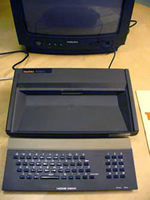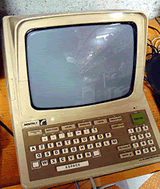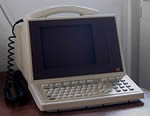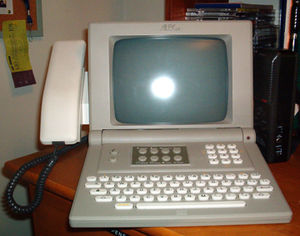Browsing History
or ... The Origin of the Browser
In its earliest days Videotex was driven by competing platforms that had been developed (concurrently) by several national Postal Telegraph and Telephone government agencies in the 70's and 80's in order to take advantage of what they perceived as the emergence of international, interactive, easily accessible, graphically-sophisticated markets in the new "wired" age.
The strategic assumption was largely correct
The Global Perspective
BUT: The battle for market share in a commercial environment among incompatible competing vendors was a standards nightmare that actually prevented the emergence of seamless, global networking. When the Videotex market collapsed in the late 80's, the "non-commercial", non-competitive infrastructure of a truly global, research-oriented international internet "web" eventually stepped into the vacuum. Successfully.
The most dramatic competitive edge of videotex was it's ability to deliver
These were the presentational and functional international "browser" standards of the time:

This was the first of the nationally-driven PTT videotex formats. The UI presentation level was fairly crude: It was character-based (essentially a colorized typewriter) and offered chunky, simplistic block graphics with only 8 colors.
Nonetheless, it was robust and the implementation - particularly of the broadcast TV Teletext services Oracle and CEEFAX - were quite successful.

This was the most successful of the national videotex ventures. This was due in large part to the French government's investment in the mass production of the"Minitel" dumb teminal, which featured a small footprint, an integrated tiny "chiclet" keyboard, and monochrome screen.
The UI presentation-level specification itself was similar to Prestel in that it was largely character-based (blocky graphics).

Literally "picture-screen-text" (the German language is so poetic). Similar in style to Prestel (with some Minitel-like improvements), this UI presentation-level specification was also largely character-based (blocky graphics).
Didn't really get much traction. Was also burdened with the challenge of supporting a non-roman character set.

The North American Presentation Level Protocol Syntax (NAPLPS sounds like a disease of the mouth) was the most graphically sopisticated of the videotex presentation standards, allowing hi-resolution graphics, sophisticated (non-linear) layout and animation.
... Telidon - the roots of NAPLPS
NAPLPS was where I did most of my work during the 80's. The presentation standard itself was far ahead of the technology that was available at the time - very similar to the SVG (Scalable Vector Graphics) specification that we use today.
From a UI design perspective, we are only just now "backing into" those same sophisticated design capabilities in the Web HTML environment.
Throughout the 70's-80's Videotex era, the industry referred to these UI devices as "decoders". The earliest versions were actual dedicated hardware devices and the dominant culture was still geek-speak, so the definition was driven by the technology. Even as we moved towards software implementation of the interactive UI (with the emergence of affordable PC's), our working metaphor was still defined by a techno-centric perspective.
The brilliance of Netscape was in defining the device through the user experience rather than through the technology - as a user-centric "browser".
Metaphors for the New Medium:
Finally, in the early 90's the techno-centric label "Videotex decoder" evolved into the human-centric label "Web browser". It signaled a sea change in our understanding of the interactive environment.